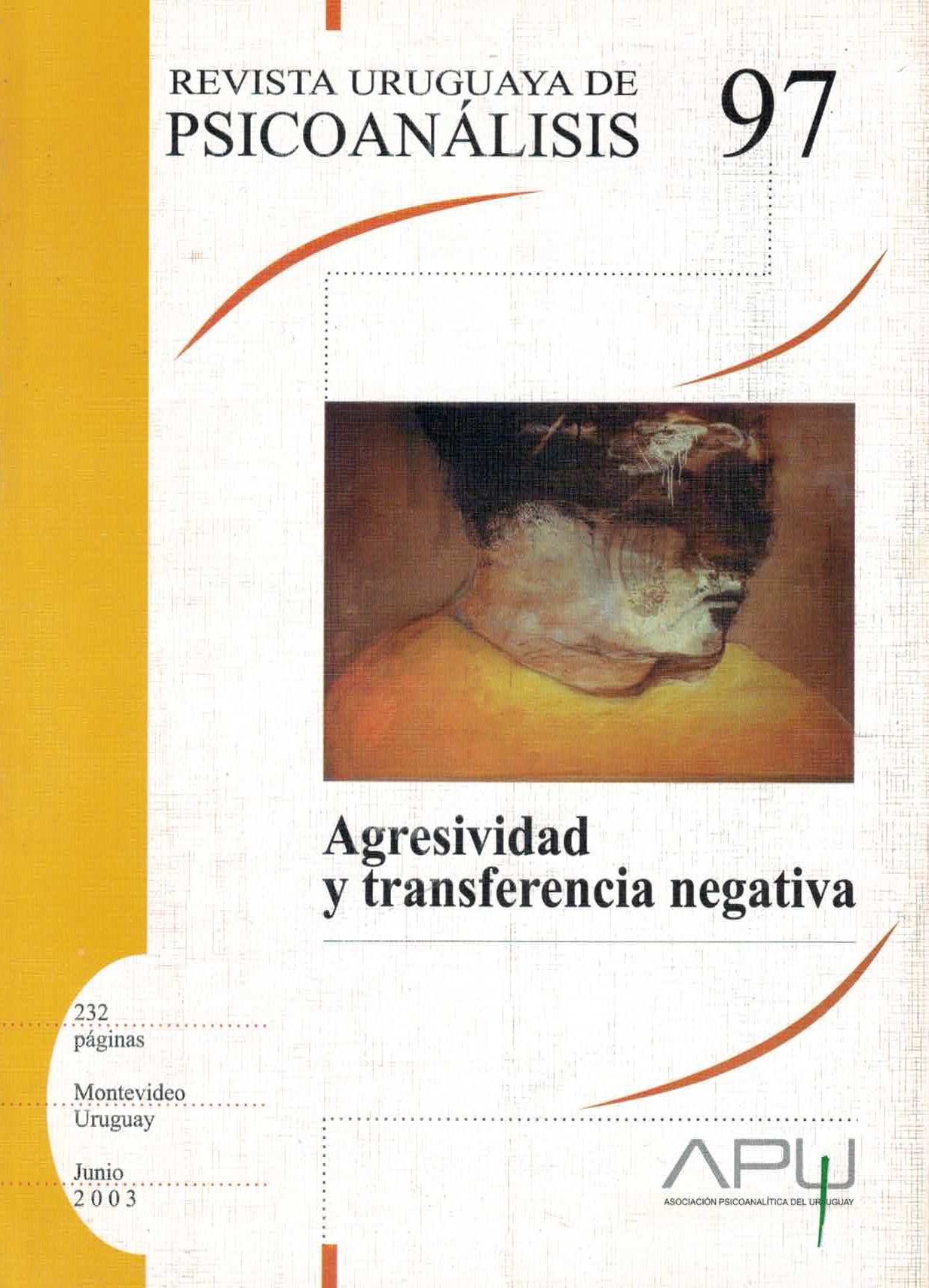Psychoanalysis in Argentina
Keywords:
historia del psicoanálisis, reseña conceptualAbstract
The interest aroused by the weight, at an international le vel, of the Argentine psychoanalytic experience, motivated my attempt to write a chronicle of the historical evolution and current status of psychoanalytical practice in Argentina from a broad perspective. In order to facilitate the exposition of these developments, I have divided them into several periods, linked to some extent
to the rather difficult evolution of the social, cultural and political context of the country. During the pre-institutional period, psychoanalysis, which had become known through the 1922 Spanish translation of Freud´s works, was the subject
of passionate debates in the intellectual and psychiatric circles. The Argentine Psychoanalytic Association, promoted by an enthusiastic local group and by two analysts trained in Europe, was created at the end of 1942; I have termed this stage the institutional period. During the subsequent period of consolidation, Argentine psychoanalysis reached a peak of creative fecundity that includes the most transcendent names and the most original ideas. The crisis of the 1970s coincided with ideological upheavals worldwide, and with the emergence of new paradigms. The current period shows an exuberant repertory of paradigms and
practices, and an abundant and disorderly number of proposals that contrasts with a decreasing demand for psychoanalytic treatment.
Downloads
References
ABERASTURY, A.; CESIO, F.; ABERASTURY, M. (1967). Historia, enseñanza y ejercicio legal del psicoanálisis. Bibliográfica Omega.
ALVAREZ DE TOLEDO, L. (1954). El análisis del asociar, del interpretar y de las palabras. Rev. de Psicoanálisis, nº 3, 1954.
ARBISER, S. (1973). Esquemas de Psicoterapias con grupos. Acta Psiquiátrica y Psicológica de América Latina, 1973.
————— (1978). Un modelo de Psicoterapia grupal. Los aportes de Pichon Rivière, Revista de Psicoanálisis, T. XXXV, Nro. 4.
————— (1985). El grupo interno: acerca de la relación entre la red intrapsíquica y la red interpersonal, Psicoanálisis (Apdeba), Nro. 3, Vol. VII.
————— (1992). Una propuesta de cambio en la concepción del psiquismo: el grupo interno. Boletín científico. Sociedade Psicanalítica do Río de Janeiro. Ediçao Especial.
————— (2001). El grupo interno, Revista de la SAP, Nro. 4, 2001.
————— (2001). David Liberman en Grandes Psicoanalistas Argentinos, Roberto Doria Medina (Compilador), Grupo Editorial Lumen, Buenos Aires.
BALÁN, J. (1991). Cuéntame tu vida. Planeta. Espejo de la Argentina.
BARANGER, W., BARANGER, M. (1969) Problemas del Campo Psicoanalítico, Kargieman, Buenos Aires.
BARANGER, W. (1971). Posición y Objeto en la Obra de Melanie Klein, Psicoanálisis en Argentina 180 - Kargieman, Buenos Aires.
BARANGER, W. y colaboradores (1980). Aportaciones al concepto de objeto en psicoanálisis. Amorrortu. Buenos Aires.
BARANGER, W.; MOM, J. (1984). Corrientes actuantes en el pensamiento psicoanalítico de América Latina. Actas del XV Congreso de Fepal.
BLEGER, J.(1967). Simbiosis y Ambigüedad, Paidós, Buenos Aires.
CÁRCAMO, Celes E. (1943). La serpiente emplumada (Psicoanálisis de la religión maya-azteca y del sacrificio humano). Revista de Psicoanálisis, Año 1,Nº 1.
CESIO, F. (1981). Historia del movimiento psicoanalítico latinoamericano. Rev.de Psicoanálisis, XXXVIII, 4.
COREL, A.; FAIMBERG, H.; WENDER, L. (1982). El psicoanálisis en la Argentina. ETCHEGOYEN, R.H. (1991). The fundamentals of psychoanalytical
technique. London: Karnac Books. FEPAL. (1994). Revista Latinoamericana de Psicoanálisi; Vol. I, nº. 1. FREUD MUSEUM (1992). Diario de Sigmund Freud (1929-1939), Hogarth Press, Londres.
GRINBERG, LANGER , RODRIGUÉ. (1957) Psicoterapia del grupo, Paidós. Buenos Aires.
JAKOBSON, R. (1963). Essais de lingüistique générale, Ed. de Minuit. París, Francia. LANGER, M. (1951). Maternidad y sexo. Paidós: Buenos Aires.
LIBERMAN, D. (1970). Lingüística, interacción comunicativa y proceso psicoanalítico, Galerna-Nueva Visión, Buenos Aires.
PICHON RIVIÈRE, E. (1971). Del Psicoanálisis a la Psicología Social, Tomo II, Editorial Galerna. Buenos Aires. PRIETO, Luis (1973). La semiología. En: El lenguaje y la comunicación, Tratado del Lenguaje, André Martinet, Buenos Aires, Nueva Visión. PUGET, J.; KAËS, R. Violencia de estado y psicoanálisis. Buenos Aires: Centro Editor de América Latina.
RACKER, H. (1959). Estudios sobre técnica psicoanalítica. Buenos Aires: Paidós. RASCOVSKY, Arnaldo (1960) El psiquismo fetal, Paidós.
SLAVSON, S. R.(1957). Are group dynamics in Therapy Groupes? Int. Jour. Of Group Therapy.
WALLERSTEIN, R. (1988). One psychoanalysis or many? Int.J.Psycho-Anal.,69: 5-21. WENDER, L.; TORRES, D.; VIDAL, I. (1992). Psychoanalysis
International. A guide to psychoanalysis throughout the world. vol. 2, edited by Peter Kutter.



 This work is licensed under a
This work is licensed under a 